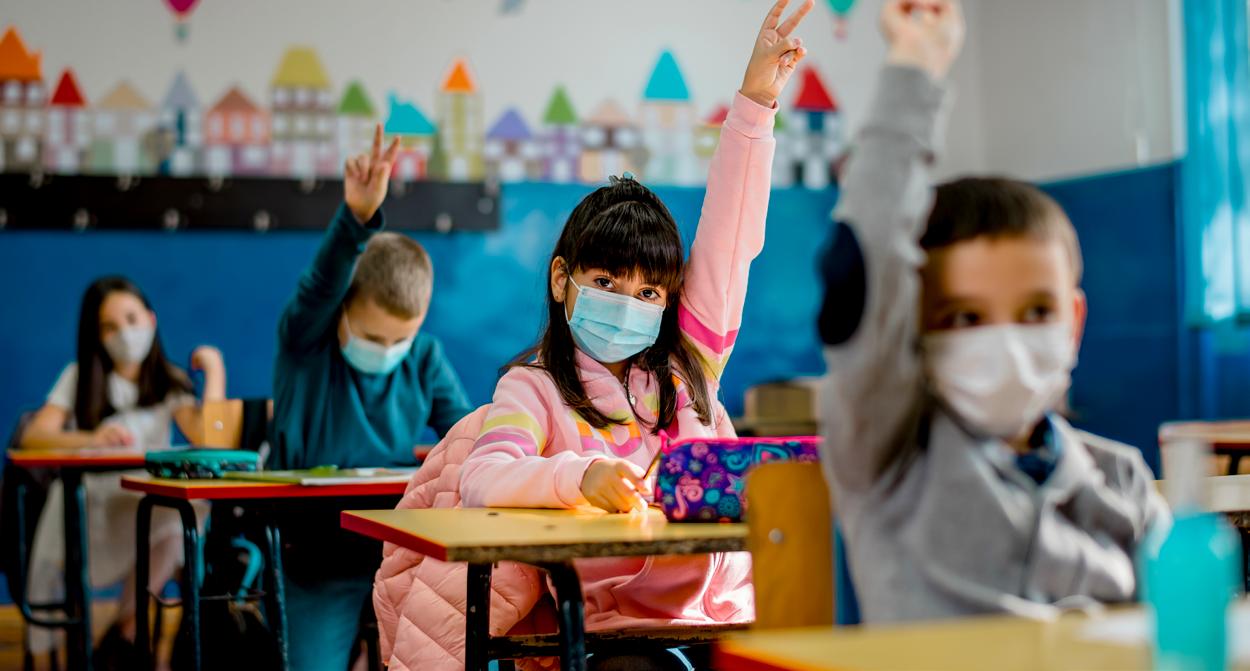
9 minute read
Environmental Issues
ENVIRONMENTAL ISSUES BY YASMINE MIEMIEC
POLLUTION, PLASTIC
-what are the solutions?
South Africans dispose of enough municipal solid waste to fill an entire football field 10 metres deep, every day. Every single person of our total population of 57 million generates up to 2,5 kilograms of waste per day, on average, depending on his or her level of income. – The Association for Water and Rural Development
According to the 2018 South African State of Waste Report, in 2017 South Africans generated 42 million tons of general waste, of which 4.9 million tons were recycled. This means that over 37 million tons of waste was sent to landfill to rot and pollute the atmosphere. With waste and refuse increasing exponentially every year, households and business organisations can no longer turn a blind eye.
Already there are reports that Johannesburg’s landfills will reach capacity within the next six years. In order to combat this evergrowing problem of waste, many organisations think that recycling is the best way to tackle this issue. Conversely, there are also other options such as upcycling that can aid in the fight against waste and pollution and companies should bear in mind that both upcycling and recycling have a place in corporate waste management. However, upcycling and recycling use distinctly different processes that feature their own benefits, depending on the quantity and type of waste being handled.
We all know about recycling – but where does the waste come from?
The biggest waste stream in South Africa is general waste. which is made up of organic waste such as food, gardening or animal waste. In addition, we have construction waste such as building rubble, sand or wood and then other waste such as paper, glass, metal, plastic and electronic materials. There are different ways to assist with decreasing this waste. One of these options is recycling where waste material is converted into the raw material for the manufacture of new melted down and used to create new cans. The key differentiator of recycling is the fact that used products are put through a process to create the new version of the same product. However, even though most people are familiar with recycling, along with the public and corporations, we know very little about the benefits of upcycling.
Upcycling: better quality and higher environmental value
Upcycling is the process of transforming waste materials or unwanted products into different, new products of higher environmental value. When one upcycles, they are not breaking down the materials of waste products as with recycling where plastic, for example, is melted down to create more plastic. With upcycling the item is refashioned, using the same materials.
A good example here, is using old tyres to make products like bags, dog beds and shoes. The material is still the rubber from the tyres, just used in new ways.
So, what’s the difference really? Both save the planet, right?
In a nutshell, the difference between the two is that recycling involves a shredding, melting and/ or compressing process, usually to recreate the same products as the original products. Upcycling involves
taking unwanted or used items and repurposing them to create different items. Both processes have an important role to play in the management of waste. Recycling is vital because of the volumes of material that can be processed and converted. Billions of tin cans are discarded each year but this amount of material cannot be upcycled into products that people will need. However, the problem with recycling lies in the fact that it has a high energy cost compared to upcycling due to the processes involved. Upcycling, on the other hand, has a human element because people are employed in the transformation of the products.

The energy inputs for upcycling are also lower than for recycling. For example, there is electricity used for sewing or woodwork, but these are minimal compared to the industrial processes used for recycling. It comes down to upcycling - the creative benefit Not every waste stream can be upcycled but where material can be transformed there is also a creative benefit for companies. We have seen offices where all the office décor and furniture is made from materials which have been upcycled, and this conveys the repurposing message to the staff in a subliminal way as well as sparking their creative juices.
So, where does recycling and upcycling fit in with corporate waste management?
When a company produces enormous quantities of waste material like wood from construction sites, it may not be feasible to upcycle all of it. In this case the company may choose to recycle the bigger volumes of waste and upcycle the smaller volumes. The benefit of this approach is that both ends of the value chain are being supported. The recycling companies are employed but the company also contributes to income generation and job creation through upcycling. Upcycling, however, as a practice is not as widely used by corporates. South African companies should be consulting with companies to try and see what waste they are producing and understand where they can make a difference.
Solutions to the plastic scourge
Plastic production over the last half-century has mushroomed, from 15 million tonnes in the 1960s to a gobsmacking 311 million tonnes in 2014. It is estimated that 13 000 pieces of plastic litter can be found in every square kilometre of the ocean. South Africans are culprits too and use between 136kg and 139kg of plastic per person per year, 47% of which is recycled. Given that corporate entities are the largest consumers and disposers of items such as plastic cups on a daily basis, the fight to save the environment should start with them. So, what can South African companies do to assist? The answer may lie in upcycling.
South Africa’s part in the war against plastic
South African companies need to look at reducing the amount of plastic packaging that all consumables are sold in. Where it is necessary to use plastic packaging, recycled plastic can be used in the making of the packaging.
This highlights the shift towards ‘reduce and reuse’. However, upcycling also plays a major role in the fight against plastic. Globally, there is a mass of innovation taking place in the repurposing of plastic items. Examples of the creative repurposing of plastic are floating islands which are helping to combat habitat loss and are the basis of aquaculture farms.
Upcycling a twofold solution
Although there is a global shift, the uptake of upcycling locally, has been slow. However, in South Africa upcycling can also help combat our huge unemployment problem. Companies can therefore contribute to the transformation of the plastic that is already in the environment and create jobs at the same time via upcycling.
By throwing their support behind projects which seek to remove plastic from the environment and by working with communities, these organisations can find groundbreaking and original ways to generate incomes from the items that would normally be thrown in the trash. An inspiring example of this is the upcycling of millions of disposable coffee cups that are used in corporate South Africa. A company has found a simple solution that has led to the training and employment of many people while upcycling their used coffee cups into eco friendly
products in the form of veggie seed bombs. This process involves separating the outside paper from the inside plastic of the cup. The paper is then used to make a mould for the veggie seed bombs. The seeds are put into compost and fertiliser, covered with the mould and sold back to corporates and the public to plant in their veggie gardens. Workers are now able to receive the used coffee cups from the company, manufacture the seed bombs and sell them as a different product, thereby creating their own income.
Corporate South Africa should contribute
Companies must realise they are not working in a vacuum. Their activities such as the contribution to upcycling and recycling not only contributes to the activities of other companies involved in upcycling but are part of an important chain to keep plastic out of landfills. Obviously not all plastic can be upcycled. However, if a company does have waste material, such as wood or Styrofoam, there may be a product which can be created which in turn will create jobs.
It is a win-win situation. Every year about 8 million metric tons of plastic is dumped into our oceans. That’s as much as a truckload of plastic waste every minute. Everything from plastic bottles and bags to microbeads end up in our oceans. This creates a swamp of large and small plastic pieces that is mistaken for food by marine animals. Plastic waste chokes and entangles turtles and seabirds. Tiny pieces of plastic are clogging the stomachs of marine creatures and fish. Scientists have found that we are already eating seafood that is contaminated with plastic. We can help put an end to plastic pollution by choosing not to use single use plastic items, such as plastic bags and straws. Single use plastic items are one of the biggest contributors to ocean pollution. Packaging accounts for just over 40% of total plastic usage.
Annually approximately 500-billion plastic bags are used worldwide. More than 1 million bags are used every minute. 14% of all litter comes from beverage containers (plastic bottles). A plastic bag has an average “working life” of 15 minutes. Plastic takes 500 years to break down. n
Plastics by the numbers Some key facts:
Half of all plastics ever manufactured have been made in the last 15 years.
Production increased exponentially, from 2.3 million tons in 1950 to 448 million tons by 2015. Production is expected to double by 2050.
Every year, about 8 million tons of plastic waste escapes into the oceans from coastal nations. That’s the equivalent of setting five garbage bags full of trash on every foot of coastline around the world. Plastics often contain additives making them stronger, more flexible, and durable. But many of these additives can extend the life of products if they become litter, with some estimates ranging to at least 400 years to break down. - National Geographic

CHANNEL AFRICA
THE AFRICAN PERSPECTIVE
Channel Africa is South Africa’s international public broadcast radio station whose primary audience is the entire African continent. Our secondary audience is the rest of the world, where we harvest our news and information. As an International Public Broadcaster, our core values subscribe to the highest journalistic ethics which fi nd expression in fairness, accuracy, and impartiality. Channel Africa is a platform through which Africa is engaged in debate with itself, and recognises South Africa as a role player in continental and international a airs.

Vision: “The African Perspective” Mission: “to promote the regeneration, revival, and rejuvenation of Africa, through the production and broadcast of dynamic, stimulating, and interesting programmes”.
Contact Information:
Tel: 011 714 2997 Fax: 011 714 2072 Email: info@channelafrica.co.za Web: www.channelafrica.co.za Twitter: channelafrica1 Instagram: channelafricaradio DSTV:802










